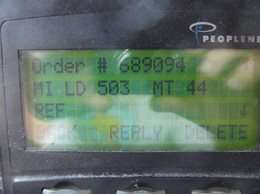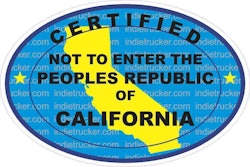The problem of the disparity between household-goods miles from two cities, the system which still determines many drivers’ paid miles and customers’ rates, and the actual miles driven is one I’ve written about before on Channel 19. In this post, you may remember, detailing a conference call with Anne Ferro hosted by the Trucking Solutions Group a little more than a year ago, owner-operator Jeff Clark asked whether a payment system such as HHG miles that pays the “driver for fewer miles than they did the run on … should be illegal.”
Clark revisited the subject himself in a blog post live today on the Team Run Smart website. The post, under the headline “HHG: The Columbus Problem,” shows one particularly egregious example, in the HHG calculation for Columbus, Ohio, to Green Bay, Wis. Clark writes:

That disparity would mean 81 miles run would go unpaid, line-haul miles revenue (calculated at an average pay-package number of $1 a mile for many leased owner-operators) of $81 dollars foregone — with fuel surcharges on top of that, figure in another two-thirds of that figure or more.
Clark, looking for a different route than what was suggested by his GPS to take some miles off of the trip found one through Ft. Wayne, Ind., that got him down to 533 miles. Taking the I-294 route around Chicago in an attempt to get to Wisconsin before he ran out of hours then added almost 20 miles to that. Regardless, as Clark notes, he’ll be paid on that 503 HHG figure.
You can read his full accounting of the haul here.
While some carriers contend that the differences between HHG and actual miles tend to even out over the course of many loads, with some HHG numbers coming in higher than actual miles run, Clark ends his piece with the best argument out there against HHG miles — that technology has made the entire system obsolete. “I have a 5-inch device that gives me accurate distance from address to address,” he writes, referring to the GPS. “It costs about $300. Technology has made HHG obsolete. It is time to make HHG go away…. I hope market forces make HHG go away. If not, we should start demanding it from FMCSA and Congress.”










